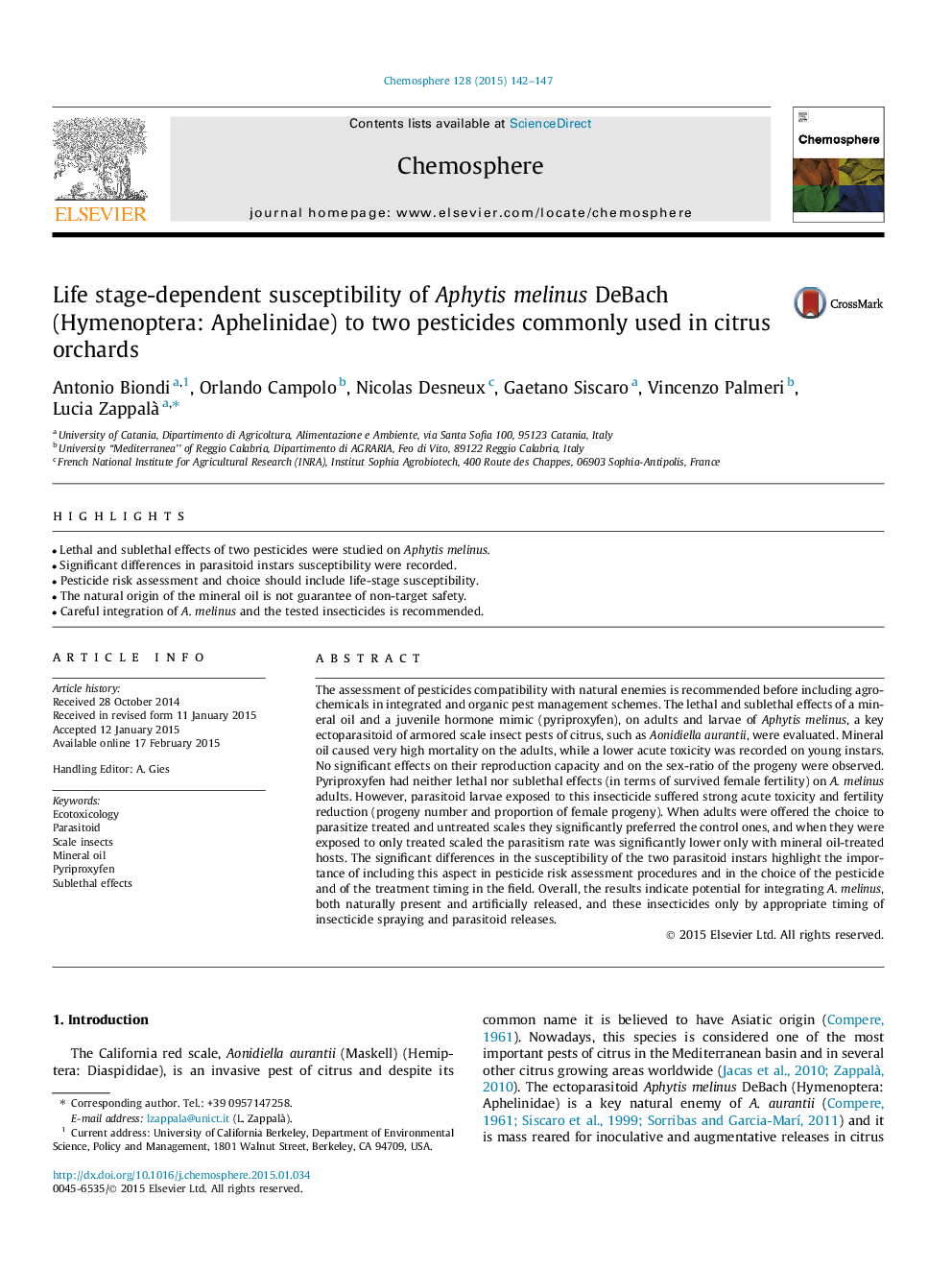| کد مقاله | کد نشریه | سال انتشار | مقاله انگلیسی | نسخه تمام متن |
|---|---|---|---|---|
| 4408482 | 1618843 | 2015 | 6 صفحه PDF | دانلود رایگان |

• Lethal and sublethal effects of two pesticides were studied on Aphytis melinus.
• Significant differences in parasitoid instars susceptibility were recorded.
• Pesticide risk assessment and choice should include life-stage susceptibility.
• The natural origin of the mineral oil is not guarantee of non-target safety.
• Careful integration of A. melinus and the tested insecticides is recommended.
The assessment of pesticides compatibility with natural enemies is recommended before including agrochemicals in integrated and organic pest management schemes. The lethal and sublethal effects of a mineral oil and a juvenile hormone mimic (pyriproxyfen), on adults and larvae of Aphytis melinus, a key ectoparasitoid of armored scale insect pests of citrus, such as Aonidiella aurantii, were evaluated. Mineral oil caused very high mortality on the adults, while a lower acute toxicity was recorded on young instars. No significant effects on their reproduction capacity and on the sex-ratio of the progeny were observed. Pyriproxyfen had neither lethal nor sublethal effects (in terms of survived female fertility) on A. melinus adults. However, parasitoid larvae exposed to this insecticide suffered strong acute toxicity and fertility reduction (progeny number and proportion of female progeny). When adults were offered the choice to parasitize treated and untreated scales they significantly preferred the control ones, and when they were exposed to only treated scaled the parasitism rate was significantly lower only with mineral oil-treated hosts. The significant differences in the susceptibility of the two parasitoid instars highlight the importance of including this aspect in pesticide risk assessment procedures and in the choice of the pesticide and of the treatment timing in the field. Overall, the results indicate potential for integrating A. melinus, both naturally present and artificially released, and these insecticides only by appropriate timing of insecticide spraying and parasitoid releases.
Journal: Chemosphere - Volume 128, June 2015, Pages 142–147